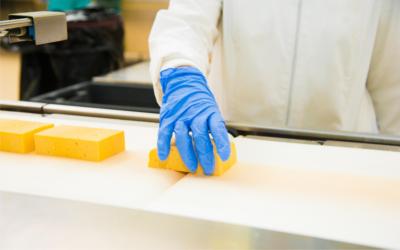Hand Hygiene: Embedded in Our Everyday Lives
 Hand hygiene is a critical aspect of maintaining good health and preventing the spread of diseases. In recent years, with the global COVID-19 pandemic, people have become more conscious of the importance of hand hygiene. The use of hygiene stations and hand cleaning stations has increased, and hand hygiene has become embedded in our everyday lives.
Hand hygiene is a critical aspect of maintaining good health and preventing the spread of diseases. In recent years, with the global COVID-19 pandemic, people have become more conscious of the importance of hand hygiene. The use of hygiene stations and hand cleaning stations has increased, and hand hygiene has become embedded in our everyday lives.
The significance of hand hygiene
Hygiene stations, also known as hand cleaning stations, are set up in various public places, such as offices, schools, hospitals, and commercial establishments. These stations provide individuals with the means to clean their hands thoroughly, preventing the transmission of harmful germs and bacteria.
The significance of hand hygiene cannot be emphasized enough. Our hands come into contact with numerous surfaces throughout the day, many of which may harbor harmful pathogens. From touching doorknobs to shaking hands, we constantly expose ourselves to potential risks. However, regular hand hygiene can significantly reduce the likelihood of contracting communicable illnesses.
the development of various sanitizing products
Hand hygiene practices have evolved over time, with the development of various sanitizing products. The most common form of hand hygiene involves using soap and water for handwashing. This simple yet effective practice can remove dirt, germs, and chemicals from the hands. Proper handwashing technique involves wetting the hands, applying soap, lathering for at least 20 seconds, rinsing thoroughly, and drying with a clean towel or air dryer.
In addition to handwashing, the use of hand sanitizers has gained popularity, especially in situations where soap and water are not readily available. Hand sanitizers typically contain alcohol or other sanitizing agents that kill or inhibit the growth of microorganisms. They are convenient and easy to use, making them a practical alternative to handwashing on the go.
Hygiene stations
Hygiene stations are equipped with facilities for both handwashing and hand sanitizing. They often feature sinks, soap dispensers, paper towel holders, and hand sanitizer dispensers. These stations are strategically placed in high-traffic areas to ensure maximum accessibility and encourage hygiene practices.
The COVID-19 pandemic has brought a renewed focus on hand hygiene and hygiene stations. As countries implemented various measures to contain the spread of the virus, hand hygiene emerged as a powerful tool against its transmission. The World Health Organization (WHO) and other health organizations have continuously emphasized the importance of hand hygiene during the pandemic.
 Many organizations and establishments have taken the initiative to install hygiene stations in prominent positions within their premises. In hospitals and healthcare facilities, hygiene stations are crucial in preventing healthcare-associated infections. They serve as a constant reminder for healthcare workers to practice proper hand hygiene, reducing the risk of cross-contamination between patients.
Many organizations and establishments have taken the initiative to install hygiene stations in prominent positions within their premises. In hospitals and healthcare facilities, hygiene stations are crucial in preventing healthcare-associated infections. They serve as a constant reminder for healthcare workers to practice proper hand hygiene, reducing the risk of cross-contamination between patients.
Schools play a vital role in promoting hand hygiene among young children. Hygiene stations in schools not only provide the means for hand cleaning but also educate students about the importance of hand hygiene. Teaching proper handwashing techniques and encouraging regular hand hygiene practices can instill lifelong habits that contribute to overall well-being.
The workplace is another setting where hygiene stations have become prevalent. Employers understand that maintaining a healthy workforce is essential for productivity. By providing hygiene stations and promoting hand hygiene practices, employers can create a safer working environment, reducing the number of sick days taken by employees.
Furthermore, hygiene stations have also found their way into public transportation hubs, shopping malls, and other communal spaces. These stations act as a safeguard against the spread of diseases, assuring the public that measures are in place to protect their well-being.
conclusion
In conclusion, hand hygiene is deeply embedded in our everyday lives. The use of hygiene stations and hand cleaning stations has become a necessary part of public health and safety measures. Proper hand hygiene practices, such as handwashing and hand sanitizing, are essential in preventing the transmission of diseases. As we navigate through the COVID-19 pandemic and beyond, it is crucial to continue prioritizing hand hygiene to safeguard our health and well-being.


